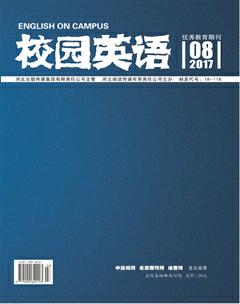The Analysis of College English Curriculum Requirements Applied in Digitally Mediated Learning
胡欣悦
【Abstract】College English Curriculum Requirements is a policy to keep up with the new developments of higher education in China. In this paper, we are concerned about the general overview of this policy and how the key policy points are related to digitally-mediated learning. More specifically, we are focused on the strengths and weaknesses of implications of the policy for digital practices.
【Key words】College English Curriculum Requirements; Digitally Mediated Learning; strengths and weaknesses
1. Overview
College English Curriculum Requirements is a policy formulated by the experts organized by Chinese Ministry of Education and published by Shanghai Foreign Language Education Press in 2007. It is regarded as the main basis for universities to carry out English teaching for non-English major students in China. The main aim of this policy is to promote the reform of college English education, to improve the quality of English education in Chinese universities, and to meet the needs of talent cultivation in the new era in China.
2. The key policy points related to digitally-mediated learning
Many key points which related to digitally-mediated learning are included in the policy. Firstly, it requires colleges and universities to make full use of modern information technology and to improve teacher-oriented teaching model based on the computer teaching model. Secondly, colleges and universities should explore a Web-based listening and speaking course based on students proficiency and schools condition. In addition, in order to carry out the new model, an e-learning system should be improved, including language teaching, language learning, feedbacks, and a complete process of management.
3. An analysis of the implications of the policy for digital practices
3.1 Strengths
Thomas and Thomas (2012) highlighted the rapid development in communication technology in the three late decades in China, especially Web 2.0 and other social media platforms, have an influential effect on the international communication among people. This is why more and more technologies are used in language education, such as PowerPoint, e-mails, and etc (Hawawini, 2005). One of the advantages of these new technologies is that they provide a much more flexible learning approach. In the recent years, after China entering World Trade Organization and holding the Olympic Games, there is an urgent need for “a more modern educational system that prepares people to interact with a global society” (p. 303, Fang & Warschauer, 2004). I think students could have a much broader global view of the modern world by using different media platforms, such as YouTube, Facebook, and etc. In addition, it saves teachers time if they can answer the questions and guide students performance online, regarding to the large class fact in China, online guidance is more flexible in time and place.
3.2 Weaknesses
One concern of this policy is the fact that there are still some schools in undeveloped regions in a poor educational condition in China. The imbalance of educational facilities is still one of the biggest obstacles for Chinese government developing computer-based education (Zhu, Gu & Wang, 2003). Besides, there are still a number of teachers who cannot accept the new model of language teaching. Zhu, Gu & Wang (2003) pointed out a fact that, although many universities joined the program of online teaching, teachers still took the traditional teaching methods. What worries me most is the acceptance of students in terms of the new English teaching model. Just like what the policy requires, students are encouraged to take the e-learning system, which means they could not avoid accessing computers. I am afraid with a wide range of using new teaching model; both teachers and students may get into trouble and get into a panic.
4. Conclusion
College English Curriculum Requirements seems to be a good policy because it considers the current situation of using technology to facilitate teaching all over the world. Although there are some problems that cannot be avoided, the strengths are outstanding as well. I am sure with the development and improvement of the policy, more and more teachers and students can benefit from it.
References:
[1]Chinese Ministry of Education.(2007).College English Curriculum Requirements.Shanghai:Shanghai Foreign Language Education Press.
[2]Fang,X.,&Warschauer,M.(2004).Technology and curricular reform in China:A case study.TESOL Quarterly,38(2),301-323.
[3]Hawawini,G.(2005).The future of business schools.Journal of Management Development,24(9),770-782.
[4]Thomas,M.,&Thomas,H.(2012).Using new social media and Web 2.0 technologies in business school teaching and learning.Journal of Management Development,31(4),358-367.
[5]Zhu,Z.,Gu,X.,& Wang,Q.(2003).A panorama of online education in China.Educational Technology,43(3),23-27.

